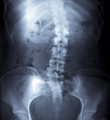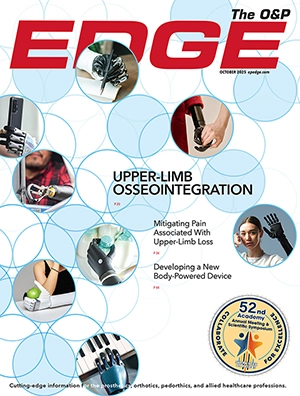
Researchers re-examining the claim that high body mass index (BMI) negatively impacts the efficacy of orthotic management for adolescent idiopathic scoliosis (AIS) found that children on either end of the BMI spectrum are more likely to fail brace treatment than their counterparts with mid-BMIs.
The retrospective study involved 182 consecutive patients with AIS who were treated with a TLSO at a large pediatric tertiary care center. The cohort comprised patients with a mean age of 12.5 years at brace prescription and a mean follow-up of two years. Patients were divided into three groups: high-BMI (BMI > 85th percentile); low-BMI (BMI < 20th percentile); and mid-BMI (BMI = 20th-85th percentile).
The data collected included patient demographics, BMI percentile, Risser stage, and menarche status; radiographic curve features at brace prescription, at in-brace visit, and at final follow-up; and the need for eventual surgical treatment. Successful orthotic treatment was defined a less than 5 degree increase in the primary curve, prevention of progression past 45 degrees, and avoidance of surgery. Poor brace compliance was defined as having a self-reported inability to wear the brace for more than 12 hours per day.
Compared to the group with mid-BMIs, patients with high- and low-BMIs were significantly more likely to fail orthotic management. Average curve progression was 2.5 degrees (± 8.8 degrees) in patients in the mid-BMI group, 5.7 degrees (± 10 degrees) in patients in the high-BMI group, and 7.4 degrees (± 10.9 degrees) in patients in the low-BMI group. The association between high BMI and orthotic failure disappeared when compliance and in-brace correction were taken into account, but the association between low-BMI and each poor outcome remained significant.
Based on the results, the researchers conclude that the failure rate in patients with high BMIs appears to be in large part attributable to an inadequacy of in-brace curve correction as well as to poorer brace compliance. They stated that the poor in-brace correction may be attributed to soft tissue interference in transmitting the corrective force of the brace to the spine and that low compliance might be due to excess soft tissue that makes the brace hotter, more restrictive, poorer fitting, and less tolerable to wear.
Regarding the cohort with low BMIs, the researchers hypothesized that the poor in-brace correction may be due to decreased flexibility of curves in these patients or difficulty in tolerating tightening the brace enough to create an adequate corrective force in these more slender individuals. They also found that this group is more likely to be noncompliant with brace wear, perhaps due to increased brace discomfort caused by the brace rubbing over their more protuberant bony prominences or a possible weight-based discrepancy in tolerance of the social stress, negative cosmetic appearance, and body image issues associated with brace wear. However, the multivariate analysis revealed that these factors did not fully account for their worse outcomes, leading the researchers to conclude that a low BMI appears to be an independent risk factor for brace failure.
The open-access study was published online August 8 in the Journal of Children’s Orthopaedics.




